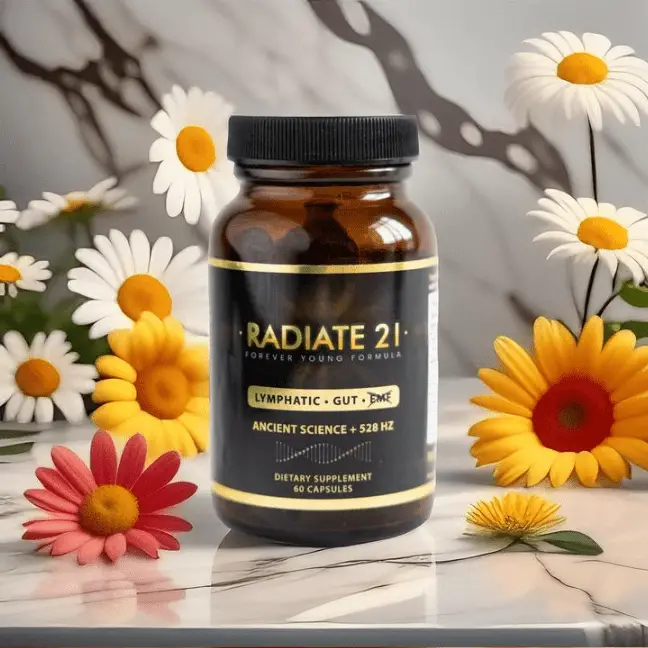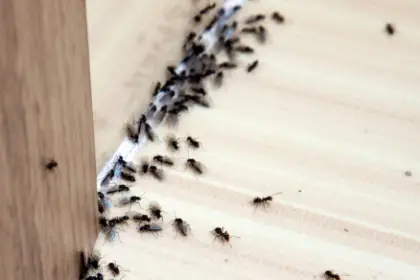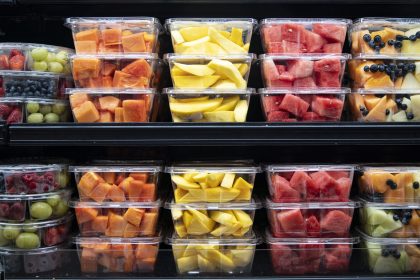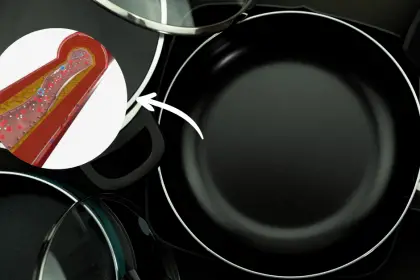Plastic has become so woven into our everyday lives that most people don’t even think twice about it. From storage containers to cooking tools, it’s everywhere in the modern kitchen. But here’s the hidden truth: much of this plastic isn’t harmless. Under the right conditions—heat, friction, or even just time—plastic can leach microscopic particles and chemical additives directly into your food and drinks.
And when you ingest them? They don’t just leave your body. Studies show they can build up in your blood, organs, and even your brain, creating a slow but steady health threat.
You might think you’re safe because you don’t use cheap plastics, or because your water bottle says “BPA-free.” But research now reveals that even supposedly “safer” plastics release microplastics and endocrine-disrupting chemicals. The problem isn’t just what’s obvious—it’s the sneaky things you’d never expect.
Let’s uncover the Top 5 Sneaky Things in Your Kitchen That Leach Plastic into Your Bloodstream—and what you can do to protect yourself.
1. Plastic Cutting Boards
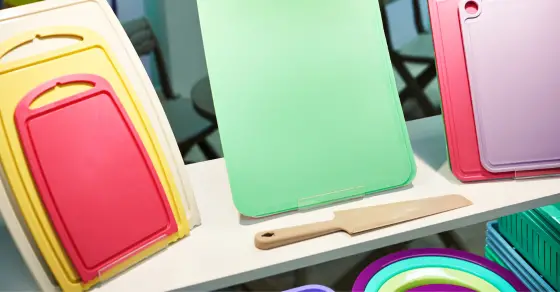
That innocent cutting board sitting on your countertop could be one of the worst offenders. When you chop, slice, or dice on a plastic cutting board, tiny plastic shavings—called microplastics—are released.
A 2020 study published in Environmental Science & Technology found that just from regular chopping, plastic cutting boards release tens of thousands of microplastic particles into your food. Unlike wood or bamboo boards, which create biodegradable shavings, those plastic particles don’t break down in your body. They can accumulate in your gut and bloodstream.
Why it matters:
- Microplastics have been linked to gut inflammation, hormone disruption, and even DNA damage.
- Over time, these particles can travel beyond your digestive system, entering your bloodstream and circulating to major organs.
Safe swap: Switch to wooden, bamboo, or glass cutting boards. Wood naturally has antibacterial properties, and glass doesn’t release particles at all.
2. Plastic Food Storage Containers
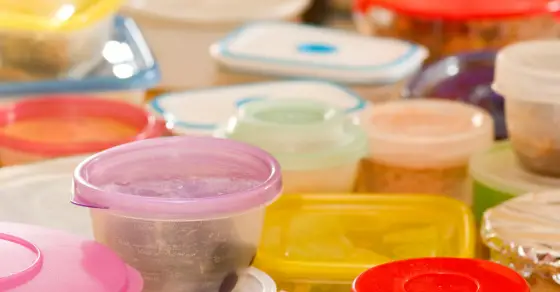
Most people still store leftovers in plastic containers. Even if they’re “microwave-safe” or “BPA-free,” they’re not truly safe. Why? Because heat, oil, and acidic foods (like tomato sauce or citrus-based dishes) can cause plastics to break down, leaching chemicals into your food.
The most concerning culprits are phthalates and bisphenols (BPA, BPS, BPF)—chemicals known as endocrine disruptors. These interfere with your hormones, mimicking estrogen or blocking testosterone.
Health consequences include:
- Weight gain and obesity (due to hormone disruption).
- Infertility and reproductive issues.
- Increased risk of hormone-related cancers like breast and prostate cancer.
- Early puberty in children.
Even “BPA-free” plastics aren’t truly safe. Manufacturers often replace BPA with BPS or BPF, which studies show can be just as harmful.
Safe swap: Store your food in glass containers with silicone or stainless-steel lids. Mason jars, Pyrex glass containers, and stainless steel tins are excellent alternatives.
3. Nonstick Cookware (Teflon and Similar Coatings)
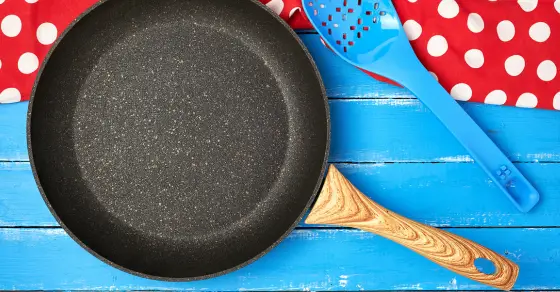
Nonstick pans may make cooking easier, but the coating is a hidden danger. Most are made from a class of chemicals called PFAS (per- and polyfluoroalkyl substances), sometimes nicknamed “forever chemicals” because they never break down in the environment—or in your body.
When heated, scratched, or worn, nonstick coatings release toxic microplastics and chemical fumes. These can be inhaled or ingested with your food.
Health impacts of PFAS exposure include:
- Immune suppression (your body struggles to fight infections).
- Thyroid dysfunction, leading to weight gain and fatigue.
- Reduced fertility and birth defects.
- Increased risk of liver disease, kidney cancer, and testicular cancer.
The scariest part? PFAS chemicals are so persistent that once they’re in your body, they stay there for years. Researchers have even found them in umbilical cord blood of newborns.
Safe swap: Replace nonstick cookware with ceramic-coated pans, stainless steel, or cast iron. These options don’t leach plastics or forever chemicals.
4. Plastic Kettles, Coffee Makers, and Hot Water Dispensers
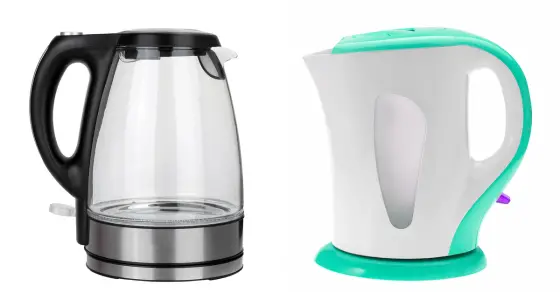
Many people start their day with hot tea or coffee—but if your kettle or coffee maker has plastic components, you may also be starting your day with a dose of microplastics.
When boiling water or brewing coffee, heat accelerates the breakdown of plastic parts like water reservoirs, tubing, or filter housings. Studies show that hot liquids leach hundreds of thousands of microplastic particles per liter when prepared in plastic kettles or coffee makers.
That means your “morning ritual” could be flooding your bloodstream with invisible plastic contaminants—before you’ve even had breakfast.
Why this matters:
- Hot beverages speed up plastic leaching far more than cold.
- Coffee and tea already contain natural compounds that can interact with plastics, increasing chemical migration.
Safe swap: Use a stainless steel kettle or a glass French press. For coffee, opt for pour-over methods with stainless steel or glass brewers.
5. Plastic Water Bottles
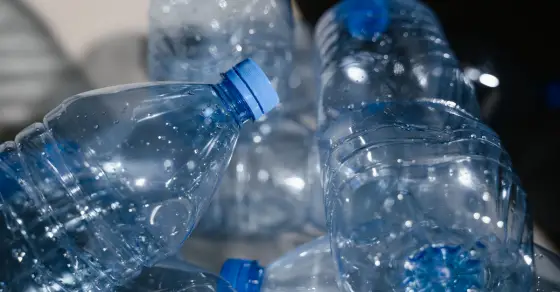
This one may seem obvious, but the issue runs deeper than most people realize. Even if you only drink from your plastic water bottle occasionally, you’re still ingesting a shocking number of microplastics.
A recent study from Proceedings of the National Academy of Sciences found that bottled water contains roughly 240,000 microplastic particles per liter—much higher than previously thought. That means if you drink just one liter a day, you could be consuming millions of plastic fragments each year.
The body doesn’t just flush these particles out. Researchers have found microplastics in human blood, lungs, and even the placenta of unborn babies.
Health risks:
- Increased oxidative stress (accelerated aging).
- Cardiovascular problems due to inflammation in blood vessels.
- Disruption of the immune system.
- Possible links to neurodegenerative diseases like Alzheimer’s.
Safe swap: Invest in a stainless steel or glass reusable bottle. If you’re worried about weight, there are ultra-light stainless steel options that are just as portable as plastic bottles.
The Bigger Picture: How Plastic Ends Up in Your Bloodstream
So, how exactly does plastic travel from your kitchen into your bloodstream? The process is subtle but dangerous:
- Food Contact: Plastic containers, cutting boards, and cookware shed microplastics and chemicals into food.
- Ingestion: You eat or drink them unknowingly.
- Absorption: Tiny particles and chemicals pass through your intestinal lining.
- Circulation: They enter your bloodstream and spread throughout your body.
- Accumulation: Over time, they settle in organs like the liver, kidneys, brain, and reproductive system.
Unlike natural substances, your body doesn’t recognize plastic, so it has no efficient way to break it down or eliminate it. That’s why long-term accumulation is so concerning.
How to Detox Your Kitchen from Plastic
Eliminating plastic entirely may not be realistic, but you can drastically reduce your exposure by focusing on the worst offenders. Here’s a simple action plan:
- Switch to glass or stainless steel for storage, cooking, and drinking.
- Avoid heating food in plastic. Heat accelerates chemical leaching.
- Replace nonstick pans with cast iron, stainless steel, or ceramic.
- Use wooden or bamboo cutting boards instead of plastic.
- Choose whole foods over packaged foods whenever possible. Plastic packaging can leach during transport and storage.
Even making 2–3 swaps can cut your daily exposure dramatically.
Final Thoughts
Your kitchen should be the place that fuels health and vitality—not a hidden source of toxins. Unfortunately, modern conveniences like plastic containers, nonstick pans, and even cutting boards have become Trojan horses for microplastics and hormone-disrupting chemicals.
The good news? By recognizing these Top 5 sneaky sources and making smarter choices, you can protect your bloodstream, your organs, and your long-term health.
Plastic may be everywhere—but it doesn’t have to be in you.
Plastics aren’t the only hidden danger in the kitchen. Certain pots and pans can also leach toxins into your food, harming your kidneys, liver, and spleen. To learn which cookware to avoid—and which is the safest—
read this article: These 5 Types of Cookware Damage Your Kidneys, Liver & Spleen (And Why This Cookware Is the Best).
Support Your Body’s Natural Detox with Radiate 21
Even if you remove the biggest plastic culprits from your kitchen, your body may still be carrying a burden of microplastics and chemical toxins. That’s why it’s important to give your cells the tools they need to detox, repair, and restore balance.
One of the best ways to do this is with Radiate 21—a supplement designed to fuel your body with 21 powerful natural ingredients that support energy, cellular repair, and gentle detoxification
By helping your body process and eliminate toxins more efficiently, Radiate 21 can be a valuable ally as you transition to a cleaner, plastic-free kitchen and lifestyle.

